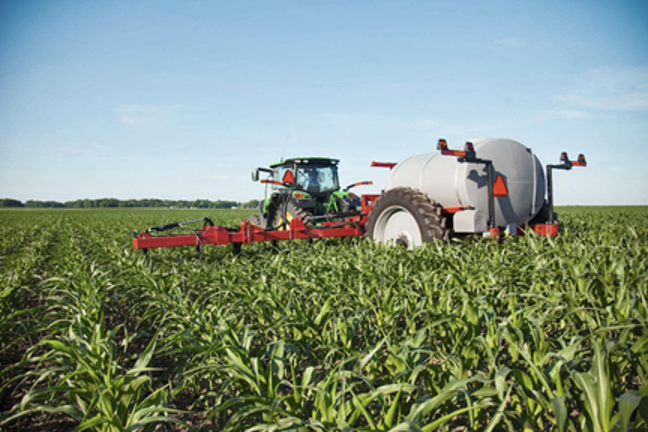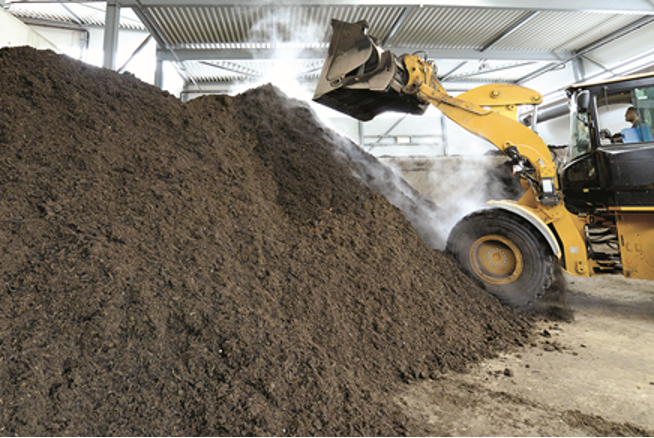Food scraps and other organics that are broken down and recycled in the anaerobic digestion process produce renewable energy, but the material left over in the tanks doesn’t completely disappear. A nutrient, carbon, and microbe-rich soil amendment, called digestate, is removed from the tanks and turned into a product that is vital for healthy farms, landscapes, and watersheds — something we’re excited about just as much as the renewable energy we produce.
Digestate comes out of our tanks as a liquid, which can then be mixed into soils to organically fertilize farms, gardens and landscapes — much like compost. As part of a carbon-negative, circular process, digestate replenishes soil with nutrients pulled from organic waste for plant growth, carbon for tilth, and microbes.

The Maryland Bioenergy Center anaerobic digester uses a centrifuge to remove the excess water, resulting in digestate solids that are used as an ingredient in soil blends, such as topsoil. This soil is then being used for a variety of purposes, including building parks and gardens, environmental restoration projects, and road construction.

The Bioenergy Innovation Center (BIC), BDC’s digester being constructed in Seaford, Delaware, will have a different approach to digestate use. Unlike the Maryland Bioenergy Center anaerobic digester, the BIC has an existing large-scale composting facility. There, the digestate solids will be used as an input for the composting facility, converting the digestate into high-quality compost. Since the BIC already has a high demand for its compost and customer base, the addition of digestate will allow for more compost to be produced and used to amend fields, gardens, parks, and homes.
BDC can do so much more than just remove the water and integrate the digestate into compost. Other facilities remove nitrogen or phosphorus to make soil amendments more suitable for specific uses. We can dry the digestate into a pellet to be used as a fertilizer, or convert it to biochar, a soil amendment with promising ability to sequester carbon and improve soil. Bioenergy Devco is researching how digestate can play a crucial role in restoring water quality in watersheds such as the Chesapeake Bay, or how it can replace energy-intensive synthetic fertilizers.
Want to learn more about BDC, the digestate we produce, and all its benefits? Please visit our website’s digestate page here.